CTRC Breakthroughs
Novel Air and Impingement Cooling Approaches
Research Topics
Microscale Transport and Microchannels
Electrically Actuated Microscale Flows
Thin-Film Transport, Wicks and Heat Pipes
Novel Air and Impingement Cooling Approaches
Surface and Interface Engineering
Thermal Materials R&D
Thermal Interfaces
Small-Scale Refrigeration
Exploratory and Novel Concepts
Renewable and Sustainable Energy
Two-Phase Heat Transfer from Arrays of Impinging Jets
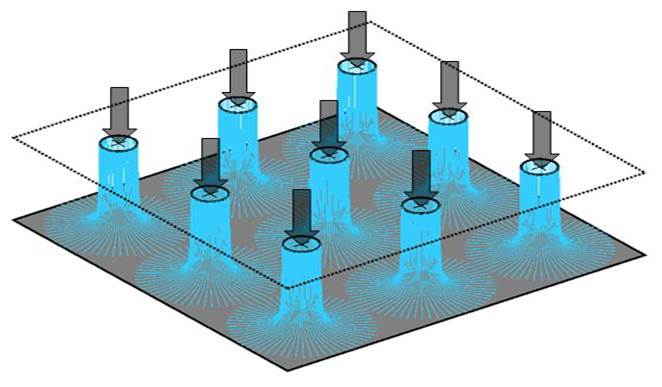
High heat flux dissipation rates at low pumping power have been previously demonstrated with two-phase jet impingement cooling. However, design of thermal management systems based on this technology requires a model that accounts for boiling heat transfer within arrays of jets. This project developed and experimentally validated a semi-empirical model for two-phase heat transfer from arrays of impinging jets. The model predicts experimental data to within 5% and has been packaged as a software tool for use by CTRC members that allows variation of the working fluid, operational parameters, and impinging array geometry.
Low Noise Amplifiers
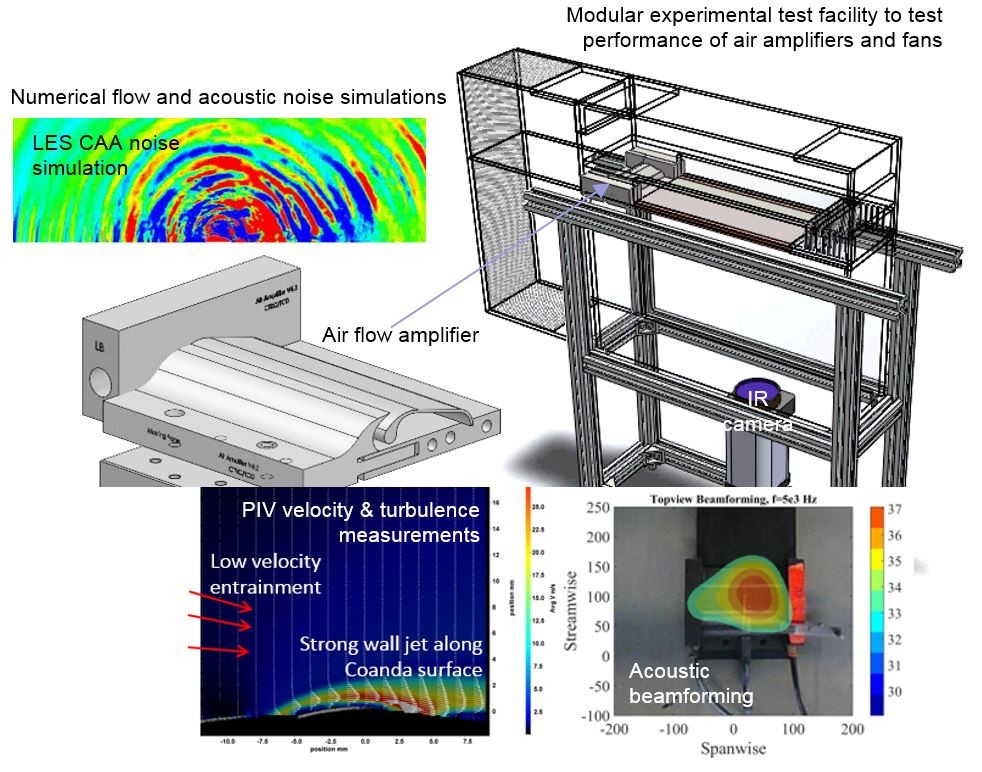
A novel linear air flow amplifier device has been developed and has been optimized for application in data center server rack cooling to replace high speed axial fans. A modular experimental test facility has been developed for objectively comparing the pressure/flow (PQ) performance, flow velocity and turbulence field, acoustic noise emission and heat transfer effectiveness of axial fans, commercial annular air flow amplifiers and the new linear air flow amplifier developed here. In parallel to the experimental measurements, computational fluid dynamics (CFD) simulations have been conducted with hybrid RANS/LES and aeroacoustic simulation methods. The numerical approach has been validated by means of experimental flow velocity measurements using particle image velocimetry (PIV). Based on these verified analytical models and correlations, an Excel-based prediction tool was developed for use with both axial fans and air amplifiers, enabling the user to vary dimensions and control variables (e.g., fan speed, inlet pressures), and verify the performance in terms of PQ curves, acoustic noise emission level and sound quality in real time.
Air and Impingement Cooling Approaches Coordinated Miniature Piezofan
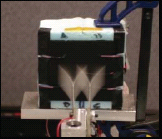
Fluidic coupling between neighboring piezofans (see figure) and its impact on the heat transfer performance is being explored in this project. This coupling phenomenon causes an increase in vibration amplitude up to 40 percent compared to an isolated single fan, which causes a further increase in heat transfer performance. There appears to be an optimum condition for separation distance between these two fans (pitch) where the performance is greatest. Fan coupling can indeed be exploited to improve the thermal performance obtained when multiple fans operate in close proximity.
Anti-Noise
Synthetic Jet Enhanced Heat Sink
Synthetic
jets use an oscillating diaphragm to pull and push air out of a
cavity with a small orifice opening; an outward air jet is
formed at this orifice location, and can be used to cool
surfaces. By placing a pair of orifices next to each other, the
pressure waves that generate acoustic noise can be strategically
attenuated. Our study shows the potential for joint optimization
of heat transfer performance and noise emission reduction using
adjacent synthetic jets. The noise attenuation outcomes of this
research will help overcome the noise issue in applying
synthetic jets in heat sinks. The attached image shows the
cooling profile provided to a surface for a dual synthetic jet
that impinges air onto a hot surface. At high air velocities the
cooling becomes more intense. By testing at a wide range of
operating parameters to predict performance and behavior, the
cooling efficiency can be optimized. 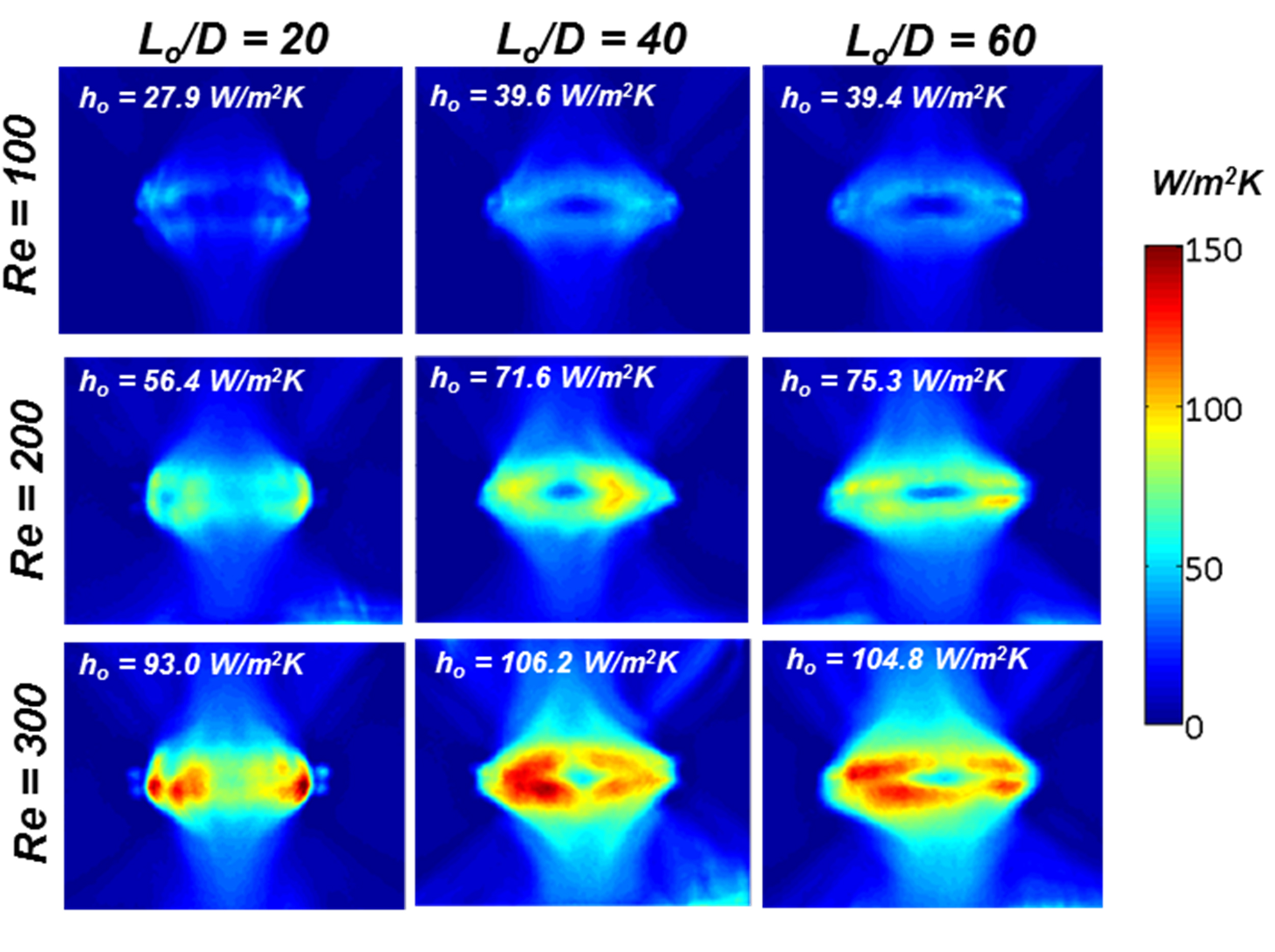
Control of Cooling Fan Noise by Radiation Efficiency Control
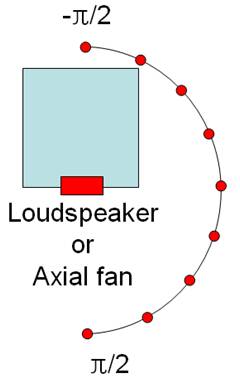
The noise level caused by axial cooling fans can be controlled by careful consideration of installation conditions as well as improving the aerodynamic design of fans. Such an installation effect is due to the dipole-like acoustic features of axial fans and this was experimentally proven by confirming the out-of-phase sound wave propagation between the front and back fields of an axial fan. Utilizing this result, an axial fan was able to be numerically modeled as a simple dipole source so that the installation effect of an axial fan could be simulated with very low computing cost. The red points in the figure indicate measurement points for directivity pattern of an axial fan mounted on ISO 10302 plenum.



